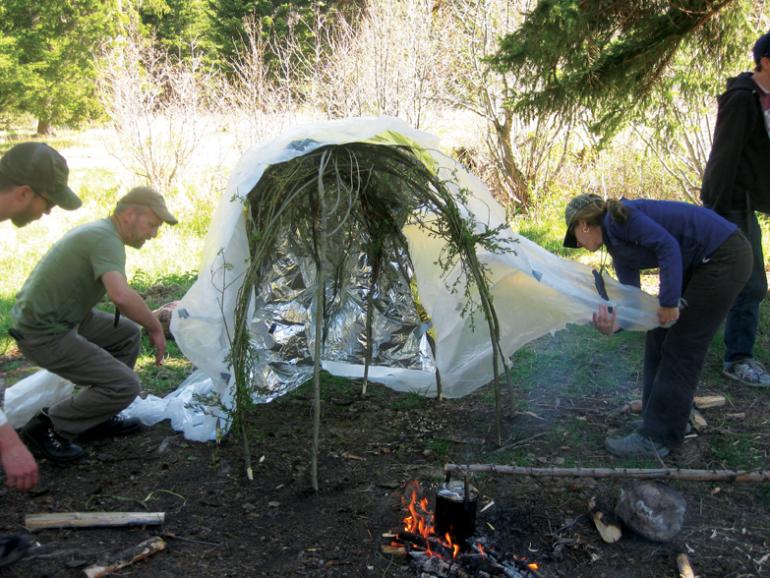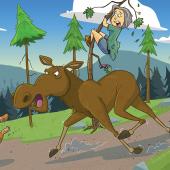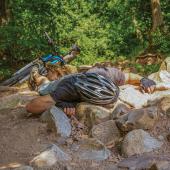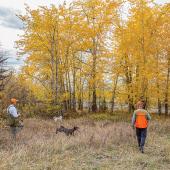Stayin' Alive
There’s been plenty of talk about survival lately, what with certain pop-culture franchises sweeping the box office. But when it comes to cutting it in the wild, hunger is anything but a game. I set out with fellow O/B staffer Caitlin Sundborg for a Wilderness Survival & Bushcraft Workshop to learn how to stay alive in the event that the odds aren’t in our favor.
We departed Bozeman in the wee hours of a Saturday morning, and despite our impeccable survival instincts (which, granted, were aided by GPS), Caitlin and I wound up performing a colossal back-road loop before arriving at the site fashionably late. Luckily, our instructor, David Cronenwett, wasn’t too hard on us, and our friendly classmates were accommodating.
Once on the scene, David got right to work. We gathered around as he quizzed us on what we already knew—which turned out to be very little—and shed light on several misconceptions regarding survival.
First of all, a person’s biggest struggle in the wild is against himself. Hope, anxiety, and fear all stem from principles of “Survival Psychology,” the main culprit for lives lost in the wilderness. David stressed the importance of preparation—even if only planning a day trip—and noted that a sturdy knife, a few matches, and a handful of skills are the only tools necessary to stay alive for days or weeks while awaiting rescue.
After covering a few rescue-favorable statistics to put our minds at ease, we wasted no time getting our hands dirty. First, foremost, and most badass? Fire. We made our way to a cluster of trees while picking up handy tips along the way, like identifying useful plants and learning how to recognize impending changes in weather. The next hour consisted of sawing, splitting, and feathering wood—all with primitive tools. An eight-minute build-a-fire race followed, which was largely unsuccessful and mildly bloody. We all preferred the “stick bundle” method we learned next.
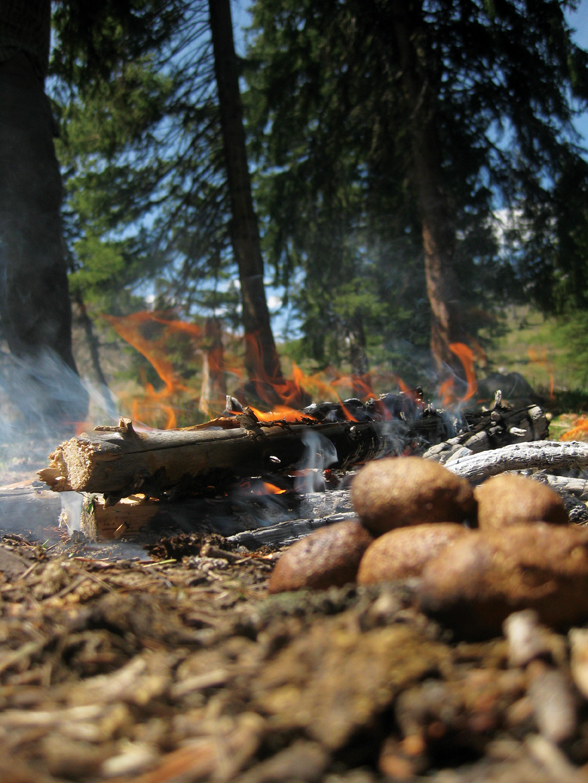
The day proceeded with crafting signal whistles from aluminum cans—practically considered a natural resource today—followed by a brief knife-sharpening workshop. A plant walk came next, where David pointed out edibles, poisons, antiseptics, and (thank God) multiple effective toilet papers.
Just when we thought survival couldn’t be more of a five-star experience, we launched into shelter construction. Freshly sharpened knives in sheath, we set out to gather willow branches. The result was a field full of what looked like wedding arches, which we covered with space blankets and plastic sheets. The makeshift sweat lodges captured heat radiation from the crackling fire a few feet away, and in 15 minutes, the temperature in our shelter was up to 90 degrees. On a warm, sunny afternoon: big whoop. But if it’s ten below in January, that kind of heat means life or death—and yes, survivor David has gotten a shelter that warm in winter more than once.
I love the outdoors as much as the next Bozemanite, and the Bushcraft course left me feeling guilty for not seeking out basic survival skills until now. This program was designed with fair-weather recreationists like myself in mind, though experts would undoubtedly benefit as well. The good news? Several local outfits offer courses throughout the year. Jump on board in case you go overboard, and earn alpha status among your friends by starting fires, dressing wounds, munching wild foliage, and erecting wedding-worthy shelters before their eyes.

